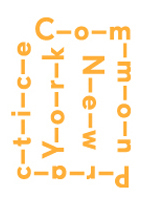More on the boycott of the 30th São Paulo Biennial (2014):
A short mention from The Guardian:
“the biennial itself faced a rebellion shortly before the opening, when a group of participating artists briefly called for a boycott of the event unless it returned funding by the Israeli embassy. The dispute was resolved by a taped amendment to the sponsorship board that spelled out that the consulates involved (including that of the UK) were simply supporting artists from their own countries.”
Hyperallergic has a more detailed coverage of the event:
"After registering objections from 61 participating artists that were supported by the entire curatorial delegation of its 31st São Paulo Biennial, the Fundaçao Bienal São Paulo has agreed to ‘clearly disassociate’ Israeli funding from the general sponsorship of the exhibition. The agreement, announced this morning in a release from the Biennial’s objecting participants, has the Israeli consulate’s logo appended only to the presentations of the Israeli artists who received its direct financial support.
The deal was struck in negotiations with Biennial administrators last night, a source close the discussions tells Hyperallergic. The number of participant signatories to the original letter was also up to 61, from the original 55, according to the Jewish Telegraphic Agency wire service. The curators’ statement of support, released one day after the August 28 artists’ letter, was unanimous, though Israeli curator Oren Sagiv “stressed” to Ha’aretz “that he did not support the letter but rather the artists’ right to protest.”
The three Israeli artists with whom the sponsorship is associated are Yohai Avrahami, Leigh Orpaz, and Nurit Sharett. A fourth Israeli artist, Yael Bartana, was a signatory to the letter of protest; the other three were not. Agence France Presse reports that Israeli funding comprised approximately $40,000 of the Biennial’s $10.5 million budget."







